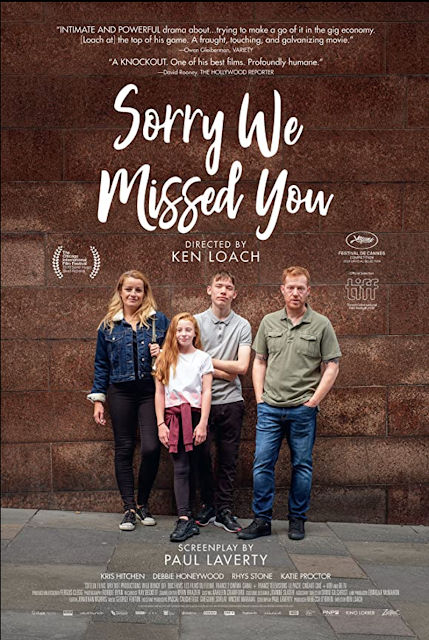Week Monday 14 December



Use WIX to create your film website. Consult the class blog page here.
Your film website will have convergent links to your FB, Twitter, Instagram. You should be building up images and video clips like the students did for CONNED
Your film website needs to work hard for you so maximise its reach and customer engagement in the way that the BAIT film website does. Can you create any appropriate merchandise, as Bait and Sorry We Missed You do, to extend the film's life and reach?
While you think about your A2 film promo pack, cast your mind back to your AS Foundation Production. In your answer to the CCR 2 on how you would distribute your film, are you sure that you mentioned a film website with convergent links?
Week Monday 23 November
Not all films rated U, PG or 12A are aimed just at children and we recognise that older cinema-goers may be interested in upcoming films that appeal to them. Because of this, a film trailer or advertisement can be shown alongside a feature film, so long as the trailer doesn’t carry an age rating higher than that of the film
The BBFC knows that cinema goers have no say about which trailers they are shown. So age rating decisions can be more restrictive for trailers. This is because difficult content in such a short format may have a greater impact on an unprepared audience.
If you believe a trailer has been wrongly shown before a cinema feature, please contact the cinema manager.
Also accessed online at https://www.essentialmediatheory.com/hallrepresentation
The film director Spike Lee explains that the images have negative impacts: "In my neighbourhood, we looked up to athletes, guys who got the ladies, and intelligent people," said Lee. "[Now] If you're intelligent, you're called a white guy or girl."[72]
In film, blacks are also shown in a stereotypical manner that promotes notions of moral inferiority. In terms of female movie characters shown by race:[73]
These will be referred to as 'internal examinations' not mocks and run from 11 - 22 January.
Leila, Jess, Evie, Morven: Your treatments look great in Canva but need editing:, it is not clear exactly what happens to the heroine in the basement. If we are in horror story territory, indicate in the treatment what the 'whole different dark world' is.
Will there be any 'realistic' bad treatment? Is the implication that the cod liver oil is drugged?
Leila - your 'similar film' is Dirty Pretty Things: does this tell me that your heroine risks being attacked physically / being subject to forced organ transplant? Do you plan to add to this with other films?
Morven, Evie, Jess - what are your 'similar films' likely to be?
Casey, Ross: Could you two decide what your 'similar films' are likely to be?
Ross We can have a word about social groups and issues
Harrison, Christina, Jake: Could you three decide what your 'similar films' are likely to be?
Charlie: Your TREATMENT is on the short side (it looks more like the Topline & Big Question post). Can you flesh it out? In Tom's work he writes about 'a scientific experiment that goes horribly wrong'. Can you three write a bit more about what kind of establishment does this research / development work
Is this post here potentially part of your future SIMILAR FILMS post ? Do you have a post on CONVENTIONS like Tom's one here?
Tom: I looked in your initial development to get more of an ides about your film and hope that you three write a bit more about what kind of establishment does this research / development work.
Alex Could you three decide what your 'similar films' are likely to be?
We learn from Cinematic Storytelling by Jennifer Van Sijll (2005)
The 100 most powerful film conventions every filmmaker must know.
SMASH CUT
CLIMATE: FOR GHOST STORIES
DIRECTING THE EYE
It is useful to build your characters by 'interviewing' them (as if they were real-life people)
The idea for this comes from an Academy Award film-maker Pen Densham in an article entitled 'Riding The Alligator'. He provides a check list of questions every writer and director should ask of themselves when they are developing their characters. The purpose of this is to outline a deep understanding of your characters for both the actors and director, and for motivating your character’s choices or actions.
You can interview them and video the interview. You can be creative in deciding the format of the 'interview' by hot-seating them so that they reveal themselves. It is creative and fun.
Examples from our previous students:
Today we hear Kezia Williams talk about making a list of comparable films to help identify the target audience for a film. What would this list be for your film? Today's class blog post will enable you to make your own post on SIMILAR FILMS or you may wish to call it TARGET AUDIENCE
Skip to 0 minutes and 5 secondsKEZIA WILLIAMS: Really important to understand who your audience is and what motivates them and what’s going to interest them and drive them to go to the cinema. So you start, often, by examining similar films that have been released in the past– comparable films is a way in which we refer to them in the industry– and create a set that we can then look back at data so we can look at lots of different data and do research, really, on those comparable films to identify who the audience was on those films. So it might be that we look at demographic data and think about, did it skew more male or more female? What’s the age group that it appeals to?
0:46Skip to 0 minutes and 46 secondsDoes it have multiple different audiences that that can appeal to? And there’s lots and lots of cinema-going trends that you can dig into from that comparable set. We’ll also look at box office data to understand regionality, to look at the cinema-going skew– so did more people go to a certain cinema chain to see these comparable films? Right down to which cinemas performed. So it might be that there’s a cinema in London that had a fantastic box office share, and that’s an important aspect for us to consider. And then once you really understand who the audience on those comparable films were, you can start to talk about the differences and similarities between those films and the film that you’re working on.
When we talk about the target audience for a film, we are referring to the specific largest group of people who might want to go and see it.
While it is important never to lose sight of the core target audience, the distributor will always try to attract as wide a range of people as possible. They will sometimes refer to films as ‘cross-over’ or ‘break out’ films – those which attract more than just the main target audience and perform better than originally expected.
Defining the target audience will affect the ‘where’ and ‘how’ of the marketing campaign:
Although the UK cinema audience is broadening, 16–24 year-olds are the segment of the population that goes to the cinema most frequently, so how could a distributor reach YOU if you’re in that target group? If you’re in another age range, how would the distributor best reach you in your opinion?
Each film is positioned through consideration of its key selling point(s) against an understanding of the age, gender, lifestyles and activities of its target audiences. Films have to compete for audiences’ time as well as disposable income.
THE BUSINESS OF FILM - FUTURELEARN
You are making a promo pack for a new film: Alex Hamilton's overview would help you state your intentions behind creating MY PROMO PACK. We watch the video; the transcript is below.
VIDEO download here
Alex Hamilton is CEO of StudioCanal UK (April 2020).
Hamilton was most recently President, International, Film and Managing Director of Entertainment One UK. From 2008-2019, he spearheaded eOne UK’s film business.
Releases included the Twilight franchise, 12 Years a Slave, Dallas Buyers Club, Mr. Turner, Spotlight, The BFG, The Girl On The Train, I, Daniel Blake, The Death of Stalin, the UK family franchise Nativity! (for which he also served as executive producer), Stan & Ollie and Green Book.
Skip to 0 minutes and 1 second0:01 ALEX HAMILTON: A film campaign, there are certain things that will remain the same and there are certain things that will be entirely different on a film-to-film basis. We always joke that, actually, whenever you’re doing a new film, you’re doing it all over again. Each individual film needs and very precisely-pitched campaign. Now, don’t get me wrong. You’re not reinventing the wheel every time. There are common things that will always be the case on certain films.
0:34Skip to 0 minutes and 34 seconds You always have to create materials. You create a poster. You create a trailer. You create TV spots. You create other bits of art. You find a release date. You decide how much money you’re going to spend on releasing the film. How much above the line marketing cost you’re going to put into it. How much TV advertising are we going to have? How much advertising online? How much advertising outdoor, radio, press? Start to wet people’s appetite for the movie. Hey, it’s got this star. Hey, it’s about that. Hey, look at this trailer moment. Hey, look at this explosion. Doesn’t it look great? It’s critical, I think, that you get the spend on your movie right.
1:13Skip to 1 minute and 13 secondsYou need to spend enough to let people know it’s there, but not too much that you’ve wasted money. Now, there’s always a trade-off between frequency and reach, for instance. In marketing, you tend to think of your core audiences, and then you work out from your core audiences. Some films will appeal to greater demographics than others. Still, the fairly analogue way of looking at this is to think of audiences in quadrants. It’s still the way every single studio uses tracking. They talk about males and females, under and over 25. Now, 26 to 70 is a however larger demo. So it’s really important not to get too hung up on those. But you start to use them as guidelines.
2:03Skip to 2 minutes and 3 secondsYou start to think, maybe the audience is 25 to 45 or is the audience over 55? Is there a male or female split? Who’s going to like this movie? Now, that’s the tyranny of marketing, in a sense. It’s actually reducing people to statistics. And we all know that taste, decision making that goes into going to see a movie at your local multiplex, it isn’t as simple as all that. But advertising, of course, has to make assumptions. And that’s how you actually can sort of tailor your spend accordingly. Our media agency will point out to us that if we’re trying to reach an older audience, them we maybe should have some railway advertising on outdoor, rather than underground advertising.
3:00Skip to 3 minutes and 0 secondsBroadly speaking, you’ll have a sales and distribution strategy which is around what’s the right date. Critical for any movie, what is the best date to put this maybe out? Lots of things go into the thinking there, be it, how many films are likely to be out that week? Is there another film that actor’s in that you’ve got that’s out two or three weeks prior, because, actually, that might mean that all the editorial that you can run off that actor has gone for another film and not yours. That’s an example.
3:30Skip to 3 minutes and 30 secondsIt’s critical you get that date right. And it is probably the simplest and hardest thing, because anybody could say, oh, I want to put that movie out that week. But, actually, getting everything right from the competition to, oh, there’s a big football match that weekend, oh, look, the weather’s turned beautiful, people aren’t going to go this weekend. There are so many factors that go into the release date that make it, still, despite all the research and analysis that’s gone into it, that still make it an art, as well as a sort of science.
Unexpectedly, you are all self-isolating at home. There are tasks for this week on the blog already (to be finished by today). Below is another aspect to bear in mind for when you eventually write your CCR, which is to be an extended essay for the first time. This aspect relates to how your product relates to social groups or issues.
You can do a PLANNING post in Pinterest with the images plus, below, some extended (individual) writing about the social groups / issues, this afternoon. The post goes up in your main blog with the writing, but it is the writing alone that will appear in the CCR. Good to get both done in one go!
Below is the sequence of PLANNING posts that we undertake: you know the drill as we did this last year. Make a start at the top and work down. Put the word PLANNING in caps before each of the following:
AUDIENCE QUESTIONNAIRE Consult this blog post
TREATMENT Examples here
MY TARGET AUDIENCE example of a post here
CHARACTERS The exam board ask us to consider social groups and stereotypes. Examples of this post and here
LOCATION RECCE
RISK ASSESSMENT Once you know exactly what you are doing, assess the risks like this
CASTING
PROPS Present this as you see fit, such as like this. If you have to construct props
STORYBOARD Examples here and here
SHOT LIST Example here and here
CALL SHEET Example here
AUDIENCE Theory Slideshare like this (after we have had class teaching on this)
CONSTRUCTION: SHOOTS Great fun to report on your shoots (and later on your edits), explaining the challenges
By Friday 13 November: Casting post; Horror Codes & Conventions post; save email pdf Thrown To The Wolves to your Regulations folder
EduSites has a number of useful resources that require my login. Let me know if your genre features below and would therefore benefit from this information.
Week Monday 2 November
AS EXAM PRACTICE TV DRAMA: EXTRAS
Tackle your analysis in the order of the scenes, starting from the opening scene.
You don't have to analyse the whole episode! The aim is to practise your skills. Aim to write between 2 and 3 sides.
Please email the prep to me
Answer the question below, with detailed reference to specific examples from the extract only.
PLANNING: CODES & CONVENTIONS